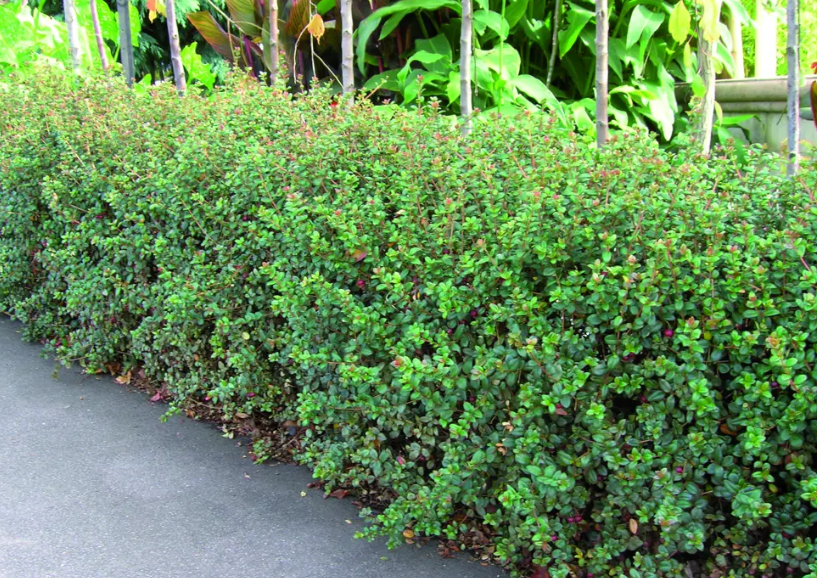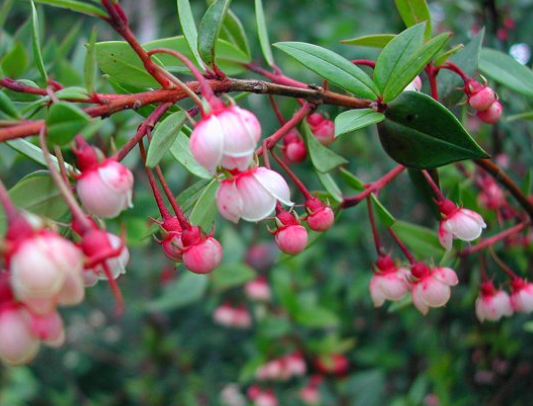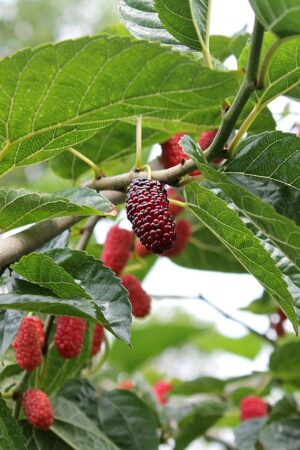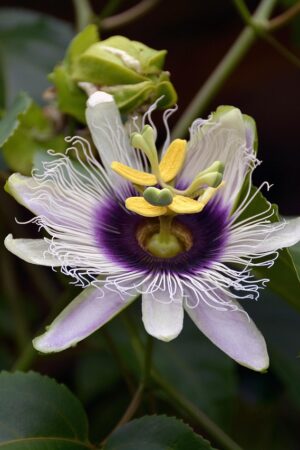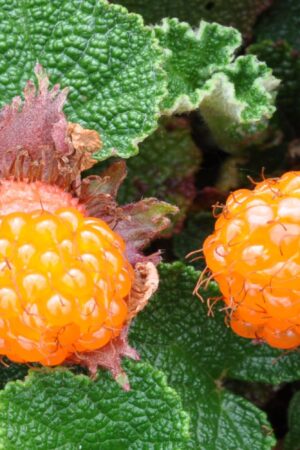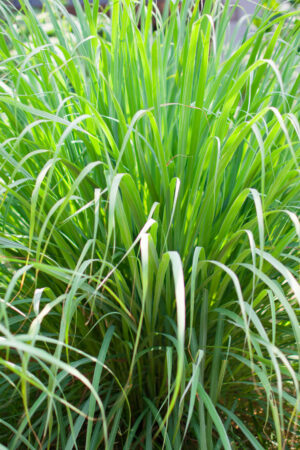Myrtus ugni, also known as Chilean guava or Ugni molinae, is a small, evergreen shrub that produces delicious, aromatic berries, often described as tasting like a mix between strawberries and guavas. It’s a great addition to gardens in colder climates or areas with mild winters, as it’s hardy to USDA Zones 8-10. Here’s a guide for planting and growing Myrtus ugni:
1. Choosing the Right Location
- Sunlight: Myrtus ugni thrives in full sun to partial shade. It requires at least 4-6 hours of direct sunlight per day to promote healthy growth and abundant fruiting. However, in hotter climates, some afternoon shade may be beneficial to protect it from scorching.
- Climate: This shrub is best suited for USDA hardiness zones 8-10, which means it can tolerate light frost but should be protected from extreme cold. If you live in a zone 7 or colder, growing it in a pot and bringing it indoors during the winter is a good option.
- Soil: Myrtus ugni prefers well-draining, slightly acidic to neutral soil (pH 5.5-7.0). It can grow in a variety of soils but does best in moist, loamy soil that retains some moisture without becoming waterlogged.
- Spacing: If planting multiple shrubs, space them about 3 to 5 feet apart to allow for their mature spread.
2. Planting Time
- Best Time to Plant: The ideal time to plant Myrtus ugni is in early spring after the last frost, or in fall when temperatures are mild. Planting during these times allows the plant to establish its roots before the heat of summer or the chill of winter.
3. Preparing the Planting Site
- Soil Preparation: Before planting, check the soil for good drainage. If the soil is heavy clay, amend it with organic matter like compost to improve drainage.
- Digging the Hole: Dig a hole that is about 1.5 times the size of the root ball. This ensures that the roots will have space to spread and establish themselves.
- Watering: Water the hole thoroughly before planting to ensure that the soil settles and removes any air pockets around the roots.
4. Planting the Shrub
- Plant Placement: Gently remove the plant from its container, and place it in the hole, ensuring that the top of the root ball is level with the surrounding soil surface. Avoid planting it too deep, as this can suffocate the roots.
- Backfill: Fill the hole with soil and gently firm it around the roots. Be careful not to compact the soil too much. Water thoroughly after planting to help settle the soil around the roots.
5. Watering and Fertilizing
- Watering: Myrtus ugni prefers consistently moist soil, especially when it’s newly planted. However, it doesn’t like being waterlogged, so ensure the soil drains well. Water the plant deeply when the top inch of soil feels dry. Once established, it becomes more drought-tolerant but will benefit from regular watering during dry spells.
- Fertilizing: Myrtus ugni benefits from a light fertilization in early spring to promote healthy growth and fruiting. Use a balanced, slow-release fertilizer or organic options like compost or well-rotted manure. Avoid over-fertilizing, as this can lead to excessive leaf growth and fewer flowers or fruit.
6. Pruning and Maintenance
- Pruning: Pruning is generally light and is best done after fruiting or in late winter before new growth begins. Remove any dead or damaged branches, and thin out any overcrowded growth to improve air circulation.
- Shaping: If desired, prune the shrub to shape it or control its size, especially if you’re growing it as a compact hedge or in a container. Since Myrtus ugni has a naturally bushy habit, it responds well to light shaping.
7. Pest and Disease Control
- Pests: Myrtus ugni is relatively pest-resistant but may occasionally attract aphids, mealybugs, or scale insects. You can manage these pests with insecticidal soap, neem oil, or by hosing them off with a strong stream of water.
- Diseases: It is prone to fungal diseases such as powdery mildew and root rot, particularly if the soil doesn’t drain well. To avoid these issues, ensure good drainage, avoid overhead watering, and maintain proper air circulation around the plant.
8. Winter Care
- Cold Protection: Myrtus ugni can tolerate some frost, but it should be protected from extreme cold in regions colder than USDA Zone 8. In colder climates, you can:
- Mulch around the base of the plant to insulate the roots.
- Protect it with frost cloths or burlap during cold snaps.
- If growing in a container, bring the plant indoors during winter to protect it from freezing temperatures.
9. Harvesting the Fruit
- When to Harvest: Myrtus ugni produces small, dark red to purple berries that ripen in late summer to early fall. The berries are ready for harvest when they are fully colored and slightly soft to the touch.
- How to Harvest: Gently pick the berries by hand, or you can use scissors to snip them off the branches. Fresh berries can be eaten right away or used in recipes.
10. Common Uses
- Fresh Eating: The berries are aromatic and can be eaten fresh, offering a sweet, slightly tart flavor.
- Beverages and Juices: Myrtus ugni is often used to make flavorful juices, syrups, and beverages.
- Jams and Jellies: The berries are commonly used to make jams, jellies, and preserves.
- Desserts and Sauces: The berries can also be used in pies, tarts, or as a topping for cakes and yogurt.
11. Container Planting
- If you are growing Myrtus ugni in a container, choose a pot with good drainage, and ensure that it is large enough to accommodate the root system. Use a well-draining, acidic potting mix, and water regularly to keep the soil moist but not soggy.
12. Common Varieties
- Myrtus ugni (Chilean Guava): This is the standard variety grown for its edible, aromatic berries.
- Myrtus ‘Red’: A variety with redder fruit and possibly a stronger flavor.
Myrtus ugni is a wonderful addition to gardens that have mild winters and enjoy fruiting plants. With proper care, it will reward you with lovely aromatic berries and a unique look.



